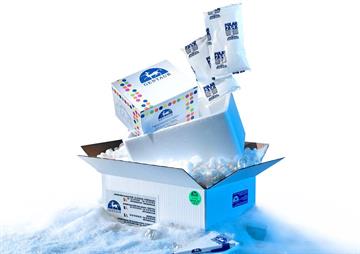Human DKK Antibody

Human DKK Antibody
777.88 EUR
In Stock
quantity
Produktdetaljer
Katalognummer: 544 - MBS857428-01mLAF405S
Produktkategori: Företag och industri > Vetenskap och laboratorium
MyBiosourceGentaur
Storlek: 0.1mL(AF405S)
Parameters
| Storage and shipping | Short-term store at 2-8 degree C. Long term store at-20 degree C. Avoid multiple freeze/thaw cycles. |
|---|
Related Products
200-014
Human Dkk-2 Recombinant Protein
The dickkopf (DKK)-related protein family is comprised of four central members, DKK-1 - 4, along with the distantly-related DKK family member DKK-11 (Soggy), which is thought to be a descendent of an ancestral DKK-3 precursor due to its unique sequence homology to DKK-3 and no other DKK family member. DKK family members, with the exception of the divergent Soggy, share two conserved cysteine-rich domains and show very little sequence similarity outside of these domains. Playing an important regulatory role in vertebrate development through localized inhibition of Wnt-regulated processes, including anterior-posterior axial patterning, limb development, somitogenesis, and eye formation, DKKs have also been implicated post-developmentally in bone formation, bone disease, cancer, and neurodegenerative diseases. DKK proteins typically play an important regulatory role in the Wnt/β-catenin signaling pathway by forming inhibitory complexes with LDL receptor-related proteins 5 and 6 (LRP5 and LRP6), which are essential components of the Wnt/β-catenin signaling system. LRP5 and LRP6 are single-pass transmembrane proteins that appear to act as co-receptors for Wnt ligands involved in the Wnt/β-catenin signaling cascade. DKK-2 has been shown to both inhibit and enhance canonical Wnt signaling; enhancing Wnt signaling through direct high-affinity binding of DKK-2 to LRP6 during LRP6 overexpression, while inhibiting Wnt signaling and promoting LRP6 internalization through the formation of a ternary complex between DKK-2, LRP6, and Kremen-2. Recombinant Human DKK-2 fused to a C terminal His-tag derived from E. coli has a molecular weight of 26.0 kDa and contains 234 amino acid residues.
354.75 €
200-014S
Human Dkk-2 Recombinant Protein
The dickkopf (DKK)-related protein family is comprised of four central members, DKK-1 - 4, along with the distantly-related DKK family member DKK-11 (Soggy), which is thought to be a descendent of an ancestral DKK-3 precursor due to its unique sequence homology to DKK-3 and no other DKK family member. DKK family members, with the exception of the divergent Soggy, share two conserved cysteine-rich domains and show very little sequence similarity outside of these domains. Playing an important regulatory role in vertebrate development through localized inhibition of Wnt-regulated processes, including anterior-posterior axial patterning, limb development, somitogenesis, and eye formation, DKKs have also been implicated post-developmentally in bone formation, bone disease, cancer, and neurodegenerative diseases. DKK proteins typically play an important regulatory role in the Wnt/β-catenin signaling pathway by forming inhibitory complexes with LDL receptor-related proteins 5 and 6 (LRP5 and LRP6), which are essential components of the Wnt/β-catenin signaling system. LRP5 and LRP6 are single-pass transmembrane proteins that appear to act as co-receptors for Wnt ligands involved in the Wnt/β-catenin signaling cascade. DKK-2 has been shown to both inhibit and enhance canonical Wnt signaling; enhancing Wnt signaling through direct high-affinity binding of DKK-2 to LRP6 during LRP6 overexpression, while inhibiting Wnt signaling and promoting LRP6 internalization through the formation of a ternary complex between DKK-2, LRP6, and Kremen-2. Recombinant Human DKK-2 fused to a C terminal His-tag derived from E. coli has a molecular weight of 26.0 kDa and contains 234 amino acid residues.
438.6 €
100-407
human Dkk-1 Recombinant Protein
DKK-1 is a member of the DKK protein family which also includes DKK-2, DKK-3 and DKK-4. DKK-1 was originally identified as a Xenopus head forming molecule that behaves as an antagonist for Wnt signaling. Subsequent studies have shown that DKK-1 and DKK-4 play an important regulatory role in the Wnt /β-catenin signaling pathway by forming inhibitory complexes with LDL receptor-related proteins 5 and 6 (LRP5 and LRP6), which are essential components of the Wnt/βcatenin signaling system. LPR5 and LPR6 are single-pass transmembrane proteins that appear to act as co-receptors for Wnt ligands involved in the Wnt/βcatenin signaling cascade. It has been suggested that by inhibiting Wnt/β-catenin signaling, which is essential for posterior patterning in vertebrates, DKK-1 permits anterior development. This notion is supported by the finding that mice deficient of DKK-1 expression lack head formation and die during embryogenesis. Recombinant human DKK-1 expressed in human 293 cells is a 35-40 kDa glycoprotein containing 235 amino-acid residues.
444.52 €
Håll dig uppdaterad! Visa tidigare publikationer

By: Author , 2 Comment
Anaplasmos hos hundar och katter – allt du behöver veta
23 August 2025

By: Author , 2 Comment
Solbränna – hur leker man säkert i solen?
16 August 2025

By: Author , 2 Comment
Biologiska läkemedel – Modernitet inom farmaci
1 August 2025

By: Author , 2 Comment
Icke-steroida antiinflammatoriska läkemedel – viktig information om populära läkemedel
22 July 2025








